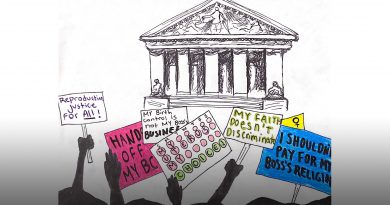The Supreme Court And Gerrymandering—Is AI The Solution?
Cases of partisan gerrymandering — the practice of redrawing legislative and congressional districts to sway elections in favor of an incumbent party — can be traced back to the early 1700s, when counties surrounding Philadelphia refused to revise jurisdiction lines that would account for its growing population. Today, the United States is still grappling with the political repercussions of partisan gerrymanders and the problem is only getting worse.
This is partially due to the lack of oversight by the judicial branch, which is notoriously sheepish toward cases involving gerrymanders. In Vieth v. Jubelirer in 2004, the Supreme Court concluded that political gerrymandering was not justiciable because “discernible and manageable standards” had not been developed to identify extreme cases of partisanship. But Justice Anthony Kennedy, whose vote determined the Court’s result, challenged the lower courts to find a workable test.
Now, statisticians are helping the lower courts devise that. Around this time last year, in Whitford v. Gill, a three-judge panel in Western Wisconsin’s District Court outlined a method for evaluating claims of partisan gerrymandering. This method, known as the efficiency gap, proved that the state’s republican legislature used redistricting to lock the democrats out of power.
The panel ordered Wisconsin to redraw its district maps by November 2017. But the state appealed the panel’s decision to the Supreme Court, which held oral arguments in October. A ruling is expected in June 2018 before the Court’s summer recess begins.
The Supreme Court must make a choice: should it proclaim an equal protection rule to combat partisan gerrymandering, or rid itself of this political hotbed? Furthermore, if gerrymandering is deemed unconstitutional, how will the states generate district lines that are impartial, transparent and, most importantly, fair?
As statistical software and demographic accuracy becomes more precise, and with the 2018 midterm elections and 2020 census looming, the result of Whitford v. Gill could easily determine American politics for the next century.
With so much at stake, the real question we should be asking ourselves is why are politicians still mapping districts in the first place? Surely, we’re capable of developing nonpartisan algorithms to draw district lines after each census— this is the 21 century, after all. The problem is that algorithms cannot decide the criteria for creating districts on their own. Humans must feed algorithms parameters, making them susceptible to political ambition.
If the Supreme Court can agree upon quantifiable criteria for what constitutes fair districts, apolitical algorithms may become the automated solution to partisan gerrymandering this country so desperately needs. Ultimately, the ruling of Whitford v. Gill will show us whether the Court Justices have the intelligence to define such criteria and apply it effectively through Artificial Intelligence or other nonbiased remedies.



